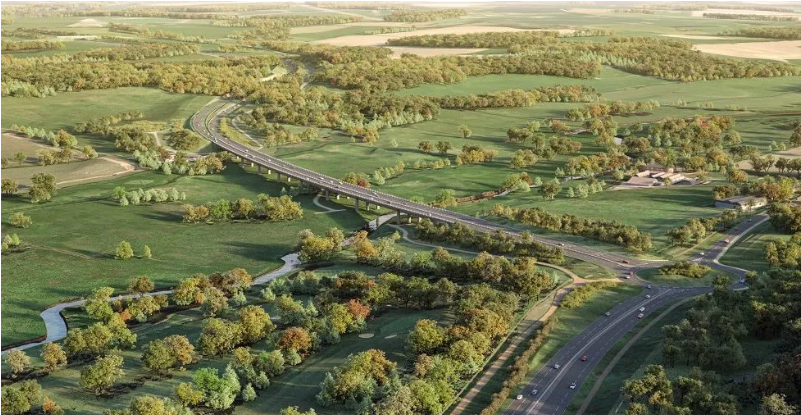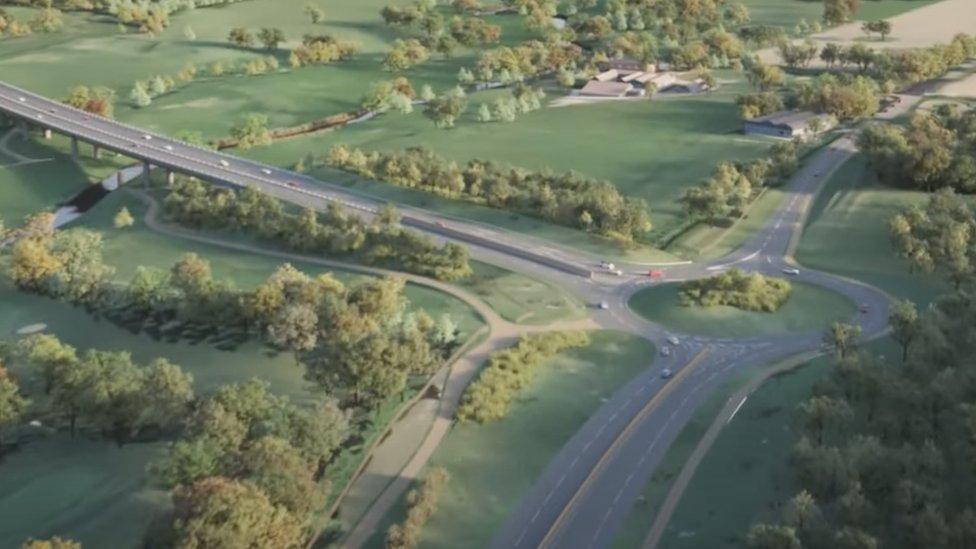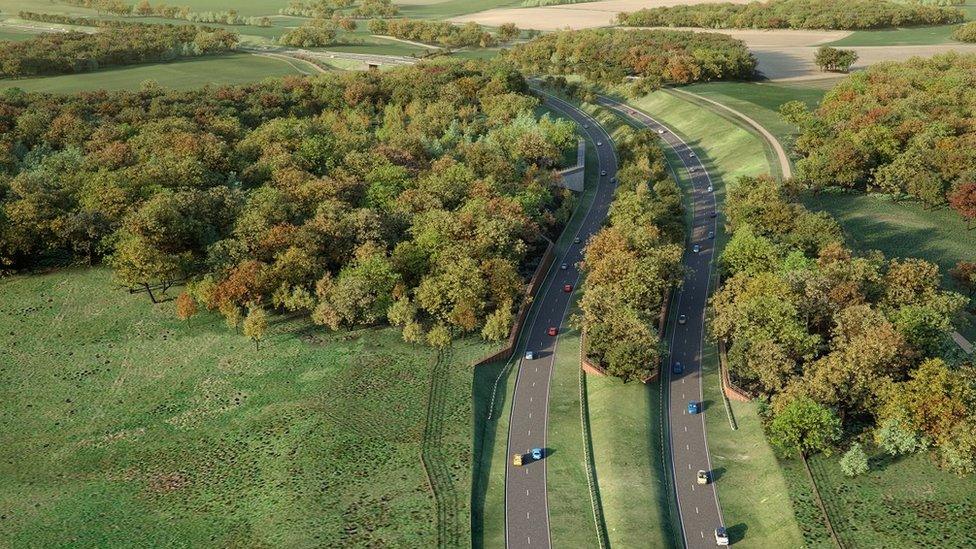Ancient woodland 'deals blow' to link road plan

The newly-designated ancient woodland, called North Wood, is covered in bluebells in spring
- Published
The discovery of an ancient woodland has dealt a "further blow" to plans for a new £274m city link road, a wildlife charity said.
Norfolk Wildlife Trust said the area of woodland has been found on the proposed route of the Norwich Western Link and has been officially recognised by Natural England - as it was believed to date back to the 1500s.
"This new entry on Natural England’s ancient woodland directory is yet another addition to an already compelling argument," said the trust's Hazel Baczkowska.
Norfolk County Council's Conservative leader Kay Mason Billig said it had only just been made aware of the official designation.
"We need some time to consider this and will continue to work with the planning authority to respond to matters that have been raised by consultees," she said.

The Western Link would complete the Broadland Northway route near Norwich
The 3.9 mile (6.3km) Western Link would connect the Northern Distributor Road, also known as Broadland Northway, with the A47 at Easton, to the west of Norwich.
Norfolk County Council's planning authority submitted its full planning application in April - the statutory public consultation period finished on 18 July.
North Wood - discovered after painstaking work by nature enthusiast John Allaway - spans 2,500 square metres, or less than an acre.
The trust said the construction of the Norwich Western Link would "negatively impact" North Wood and its wildlife, due to its close proximity.
"We’ve long known the mix of ancient woodland, riverside marshes, hedges and veteran trees found within the Wensum Valley is vital for wildlife," said Ms Baczkowska.
"We’ve also been warning for a long time the Norwich Western Link will do irreparable damage to this special landscape and the wildlife."
Woodland investigation
Natural England’s ancient woodland inventory is the official national record of these areas and lists any site which continuously had trees since the 16th Century.
The trust said planning authorities had to check the inventory to ensure any developments avoided upsetting habitats.
Mr Allaway made his discovery by scouring woodland surveys, county records and consulting a landscape history academic, before sending his report to Natural England.
The site also had a number of clues including bluebell, primrose, dog’s mercury and wood anemone, as well as earthworks often found in ancient woodland.
Mr Allaway said it had been a "complex task" and required layers of evidence, but was "delighted" his efforts had been worth it.
"If you know what you are looking at, North Wood stands out a mile," he said.
Get in touch
Do you have a story suggestion for Norfolk?
Follow Norfolk news on BBC Sounds, Facebook, external, Instagram, external and X, external.
Related topics
- Published14 June 2024
- Published26 March 2024

- Published27 November 2023

- Published13 October 2023
